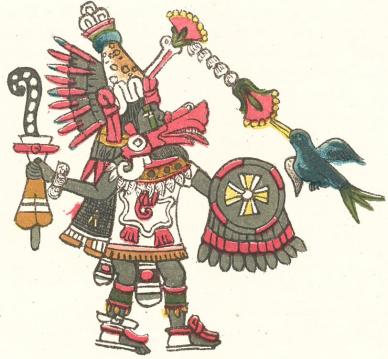During the time of the Aztecs in Mexico, cocoa was used mostly as a beverage. The white pulp around the seeds of the cocoa pod yielded wines and drinks, whereas the actual beans were used to make hot chocolate, and were sometimes even roasted and mixed with sugar (a foaming agent), toasted corn and water. Pragmatically, these beans were used as currency and to pay taxes, and the oily layer coating the beans made it useful as protection against the sun. Cocoa also held religious significance to the Aztecs. Believed to have been of divine origin, the cocoa tree was worshipped as a bridge between Heaven and Earth; chocolate was given to their gods as sanctification before making human sacrifices, and the Aztecs believed that drinking chocolate gave them some of the wisdom of Quetzalcoatl, the God of learning and of the wind.
However, that is not to say that chocolate no longer remains in culture today. In the United States, chocolate is used to celebrate special occasions. You might find some in your Halloween candy, or receive some on Valentine’s Day. Easter bunnies and chocolate Santas are common for Christian folk as well. Jewish children receive chocolate Chanukah gelt for Hanukkah—chocolate wrapped in gold or silver foil, just like the chocolate coins we sometimes receive during Chinese New Year. This is also given to children in Belgium, Germany and the Netherlands during their St. Nicholas holiday.
In Mexico, hot chocolate may be consumed along with festive foods in celebration of the 12 Days of Christmas and Candlemas. Mexicans also celebrate Dia de la Muertos (Day of the Dead) from 31st October to 2nd November with chocolate drinks amongst the living, and other chocolate offerings for the deceased. Curanderos (traditional healers) in Oaxaca, Mexico, also make use of chocolate drinks: to cure bronchitis, and to ward off strings from scorpions or bees! As part of a customary superstition, cacao beans are planted to rid evil forces and heal those who suffer from espanto.
The Kuna Indians of Panama drink five or more cups of chocolate each day, and interestingly have low incidence of heart disease and cancer. The smoke emitted by burnt cacao beans is used by their shamans (priests who use magic, acting as intermediary between the natural and supernatural worlds) for medical diagnosis, and the Kuna (indigenous people of Panama and Colombia) also use it to heal malaria and similar diseases.

– Nomster Odette

I like the nomsters´multiple approaches to chocolate, my every day mood elevator!
LikeLike
Chocolate definitely is a mood elevator!
LikeLike